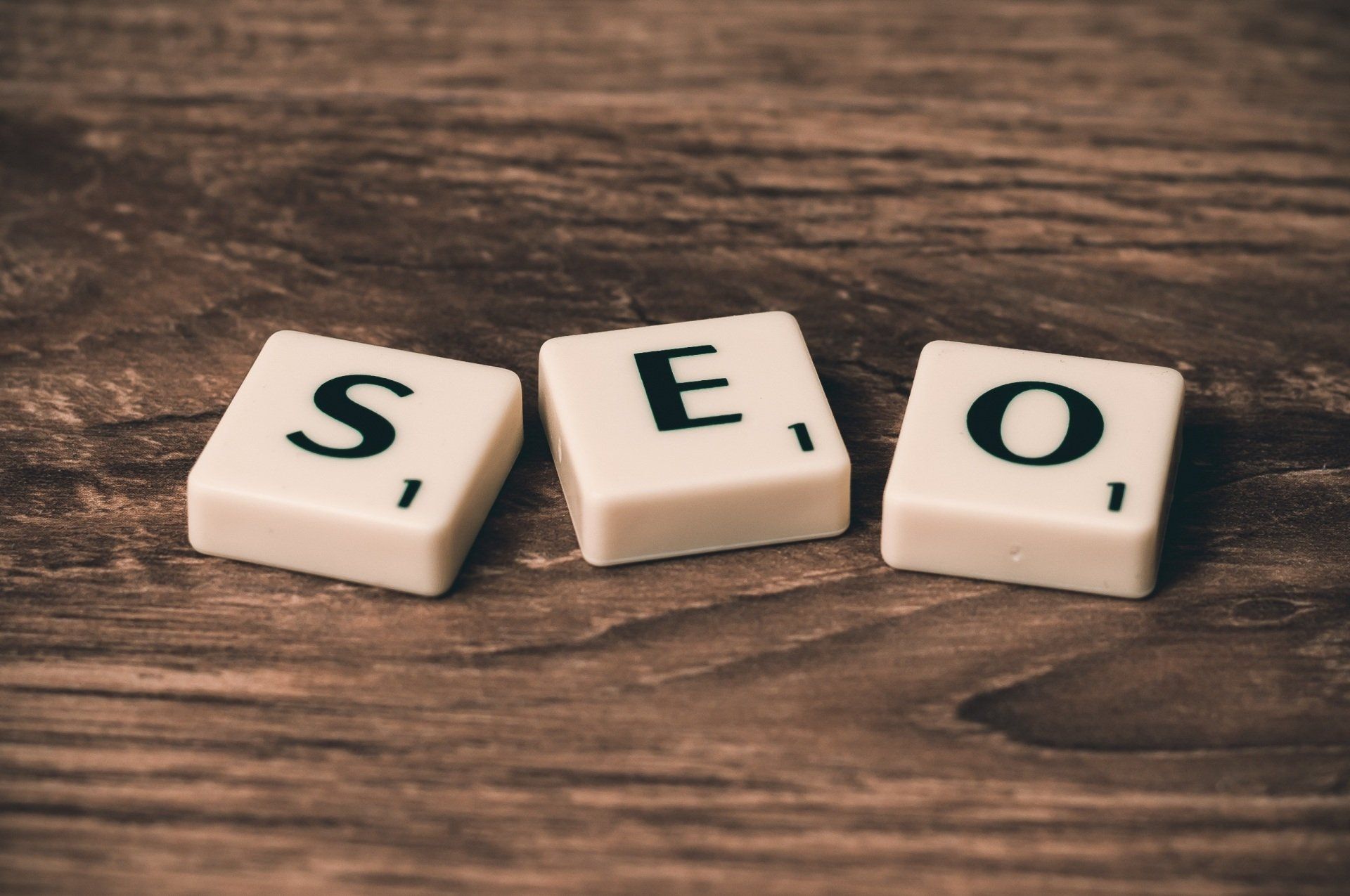The Key Elements of a Successful Google Ads Campaign
February 7, 2025
Insights from a Google Partner Agency
As the founder of a Google Partner Agency with over 12 years of experience in PPC, I’ve managed and optimized Google Ads campaigns for businesses across industries. While the platform has evolved significantly, the fundamentals of a successful campaign remain the same: strategy, precision, and continuous optimization.
Too many businesses waste ad spend because they set up campaigns without a clear roadmap. If you want to generate high-quality leads and maximize your return on ad spend (ROAS), you need to get the fundamentals right.
Here are the most important elements of a winning Google Ads campaign:
1. Clear Campaign Goals: Define Success Before You Spend a Dime
The biggest mistake I see? Running ads without a defined goal. Before launching your campaign, you need to know exactly what success looks like. Are you aiming to:
✔️ Generate leads?
✔️ Drive e-commerce sales?
✔️ Increase brand awareness?
✔️ Get more phone calls or store visits?
Each objective requires a different campaign type, bidding strategy, and ad format—so setting clear KPIs (key performance indicators) is crucial.
2. Targeting the Right Audience: Precision Over Reach
Google Ads is powerful because of its targeting capabilities. But too many advertisers cast a wide net, leading to wasted spend on irrelevant clicks.
🔹 Search Campaigns: Use intent-based keywords to target users actively looking for your product or service.
🔹 Display & YouTube Ads: Leverage custom audiences based on search behavior, website visits, and competitor audiences.
🔹 Remarketing: Stay top-of-mind by retargeting past visitors across Google’s vast ad network.
🔹 Location Targeting: Focus on high-value geographic areas where your customers are most likely to convert.
💡 Pro Tip: Use Google’s Audience Insights to analyze demographics, interests, and behaviors of your best-performing customers.
3. Keyword Strategy: Balancing Volume, Intent, and Cost
Choosing the right keywords is the foundation of any successful Search campaign. The key is balancing:
✅ High-Intent Keywords – Users actively searching for your product/service (e.g., “emergency plumber near me”).
✅ Negative Keywords – Eliminate irrelevant traffic (e.g., excluding “free” or “DIY” terms).
✅ Match Types – Use phrase and exact match to maintain relevancy while still capturing search volume.
💡 Pro Tip: Run Search Term Reports weekly to refine your keyword list and eliminate wasted spend.
4. Ad Copy That Converts: Speak to Search Intent
Your ad copy needs to do two things: grab attention and drive action. Follow this simple structure:
🔹 Headline 1: Address the searcher’s need (e.g., “24/7 Emergency Plumber – Fast Response!”)
🔹 Headline 2: Differentiate your offer (e.g., “Licensed & Insured – 5-Star Rated”)
🔹 Description: Reinforce benefits & include a CTA (e.g., “Get a free quote in 60 seconds!”)
💡 Pro Tip: Use Dynamic Keyword Insertion (DKI) to make your ads hyper-relevant to each search query.
5. Landing Page Optimization: Don’t Waste Clicks
Even the best Google Ads campaign will fail if your landing page doesn’t convert. Your landing page must:
✔️ Match the ad message (Consistency = Trust)
✔️ Load in under 3 seconds (Slow pages kill conversions)
✔️ Have a clear, above-the-fold CTA (No scrolling required)
✔️ Minimize distractions (No unnecessary links)
✔️ Be mobile-friendly (Over 60% of traffic is mobile)
💡 Pro Tip: Use heatmaps (Hotjar, Microsoft Clarity) to analyze how users interact with your landing page and identify drop-off points.
6. Smart Bidding Strategies: Maximize Your Budget
Gone are the days of manually adjusting bids 24/7 as your only means to managing your ad campaigns. Google’s AI-driven bidding strategies can help optimize your campaigns for conversions.
🔹 Maximize Conversions – Best for businesses focused on volume.
🔹 Target CPA (Cost Per Acquisition) – Ideal for lead generation.
🔹 Target ROAS (Return on Ad Spend) – Perfect for e-commerce businesses aiming for profitability.
🔹 Manual Bidding – Still useful if you want maximum control over CPCs.
💡 Pro Tip: If using Smart Bidding, make sure you have at least 30 conversions per month for Google’s algorithm to optimize effectively, if not dial in manual bidding until you do.
7. Conversion Tracking & Data-Driven Optimization
Running a campaign without tracking conversions is like driving blindfolded. You need accurate data to see what’s working and what’s not.
✔️ Google Ads Conversion Tracking – Track form fills, purchases, phone calls, and more.
✔️ Google Analytics 4 (GA4) – Analyze user behavior and traffic sources.
✔️ Call Tracking Software – If phone calls are a major lead source, track them.
✔️ UTM Parameters – Add UTM tags to URLs to track ad performance in GA4.
💡 Pro Tip: Set up offline conversion tracking (e.g., CRM integration) to measure which leads actually turn into customers.
8. Ongoing Testing & Optimization: The PPC Growth Formula
The best PPC campaigns are never “set it and forget it.” Continuous testing and optimization are what separate high-performing campaigns from money pits.
🔹 A/B Test Ad Copy – Test different headlines, descriptions, and CTAs.
🔹 Experiment with Landing Pages – Run A/B tests on forms, headlines, and layouts.
🔹 Adjust Bids Based on Performance – Increase spend on top-performing keywords.
🔹 Refine Audience Targeting – Use Google’s Audience Signals to find new high-converting users.
🔹 Analyze Competitor Ads – Tools like SEMrush & SpyFu help uncover what’s working for your competitors.
💡 Pro Tip: Use Google Ads Experiments to safely test bid strategies, ad variations, and targeting changes without risking your entire budget.
Success in Google Ads is About Strategy, Not Just Clicks
A successful Google Ads campaign isn’t just about driving traffic—it’s about driving the right traffic and converting it efficiently. When you master audience targeting, ad messaging, landing page optimization, and data-driven decision-making, you can scale your PPC campaigns profitably and predictably.

For over two decades, I’ve witnessed the evolution of SEO—from the era of keyword stuffing and link farming to today’s sophisticated algorithms powered by AI and machine learning. Amidst all the changes, one strategy that remains a topic of debate is the role of press releases in SEO. Many businesses still ask: Do press releases impact SEO? The short answer is yes, but not in the way they once did. Let’s break down the real impact of press releases on SEO performance and how to leverage them effectively in 2025. The Evolution of Press Releases in SEO In the early 2000s, press releases were an SEO goldmine. Marketers flooded newswires with keyword-optimized content, gaining thousands of backlinks overnight from syndication networks. It was an easy way to game the system—until Google caught on. By 2013, Google’s Penguin and Panda updates devalued low-quality links and penalized manipulative SEO tactics. This meant press releases, once a direct link-building tool, lost their potency for ranking manipulation. However, they never lost their value completely. In fact, when used strategically, press releases can still play a crucial role in a robust SEO strategy. How Press Releases Impact SEO Today While press releases no longer provide the instant backlink juice they once did, they still contribute to SEO in several important ways: 1. Brand Authority and Credibility Press releases published on reputable news platforms (think Forbes, Business Insider, or PR Newswire) help establish your brand as a thought leader in your industry. This indirect authority boost can improve E-E-A-T (Experience, Expertise, Authoritativeness, and Trustworthiness), a key component in Google’s ranking algorithms. 2. Earned Media and Natural Backlinks The real SEO power of a press release comes after distribution. If your story gains traction and gets picked up by journalists, bloggers, or influencers, it can result in organic backlinks from high-authority websites—links that actually move the SEO needle. Pro Tip: Focus on writing compelling, newsworthy content that journalists want to cover, rather than just stuffing a press release with links. 3. Indexation and Visibility in Google News Google prioritizes fresh, relevant content. Press releases often get indexed quickly, appearing in Google News results and giving your brand additional exposure. While the direct SEO benefit is limited, increased visibility can lead to more website visits, brand searches, and engagement signals—factors that influence rankings over time. 4. Boosting Branded Search Queries A well-distributed press release can drive more branded searches (e.g., people Googling your company name). Google considers branded search volume a strong ranking signal, indicating that people are actively looking for your business. 5. Local SEO Benefits For businesses targeting local markets, press releases distributed through local media can reinforce local relevance. If a press release gets picked up by local news outlets, it can strengthen your presence in Google’s local search rankings. How to Use Press Releases for Maximum SEO Impact Now that we know press releases still matter for SEO, let’s talk execution. Here’s how to ensure your press release delivers actual results: ✅ 1. Focus on Newsworthiness A press release shouldn’t just be a glorified blog post. It needs to have genuine news value—new product launches, major company milestones, industry-changing announcements, or exclusive research findings. ✅ 2. Optimize for Search, But Naturally • Use relevant keywords in the headline and first 100 words. • Write a compelling meta title and description for search visibility. • Include structured data markup (where applicable) to enhance how your content appears in search results. ✅ 3. Distribute on High-Quality Platforms Not all press release distribution services are created equal. Prioritize premium services like: • PR Newswire • Business Wire • GlobeNewswire • EIN Presswire • Local and niche-specific media Avoid spammy, low-quality services that distribute to irrelevant, low-DA (Domain Authority) sites. ✅ 4. Promote and Amplify the Release A press release alone won’t generate buzz—it’s how you promote it that counts. • Share it on social media and tag journalists or industry influencers. • Send it directly to media contacts who might find it relevant. • Repurpose it into blog content, LinkedIn articles, and YouTube videos to maximize reach. ✅ 5. Monitor Performance and Adjust Strategy Use tools like Google Search Console, Ahrefs, or SEMrush to track: • Referral traffic from press release sources • Organic search impressions after distribution • Earned backlinks from media coverage If a press release results in media pickups, capitalize on it by requesting dofollow links or securing guest posts with linking opportunities. The Bottom Line: Press Releases Are an Indirect But Powerful SEO Tool Press releases are no longer an instant SEO hack—but they still provide substantial benefits when executed correctly. Instead of focusing on direct link-building, think of press releases as a catalyst for earned media, brand authority, and increased search demand. In today’s SEO landscape, the best press releases don’t just live on newswires—they spark conversations, earn real backlinks, and enhance brand credibility. If you treat them as part of a larger content and PR strategy, you’ll see tangible benefits for both your brand and your search rankings. Have you leveraged press releases in your SEO strategy? Share your experiences in the comments below!

In the world of local SEO (Search Engine Optimization), building local citations is a powerful strategy for enhancing online visibility and attracting customers within your geographical area. Local citations are online mentions of your business name, address, and phone number (NAP) across various websites, directories, and platforms. These citations play a crucial role in validating your business's existence and authority to search engines like Google, thereby improving your chances of ranking higher in local search results. If you're looking to strengthen your local SEO efforts, here's a detailed guide on how to effectively build local citations: 1. Understand the Importance of Local Citations: Local citations are a key ranking factor in local search algorithms. They help establish the credibility and prominence of your business within your target geographic area. Search engines rely on consistent and accurate NAP information across multiple sources to verify the legitimacy of your business and its relevance to local searches. 2. Identify Relevant Citation Sources: Start by identifying authoritative and relevant citation sources where you can list your business information. These sources may include local business directories, review sites, industry-specific directories, social media platforms, and mapping services like Google My Business, Yelp, Bing Places, Facebook, Yellow Pages, and industry associations. 3. Ensure Consistency in NAP Information: Consistency is key when building local citations. Ensure that your business name, address, and phone number (NAP) are accurate, identical, and formatted consistently across all citation sources. Even minor discrepancies in NAP information can confuse search engines and impact your local SEO efforts negatively. 4. Optimize Your Business Descriptions: When creating local citations, take advantage of any additional fields or sections provided to optimize your business descriptions. Use relevant keywords related to your business and local area naturally within the description. Provide concise yet compelling information that encourages potential customers to learn more about your products or services. 5. Choose Quality over Quantity: While quantity matters to some extent, prioritize quality when building local citations. Focus on reputable and authoritative citation sources that are relevant to your industry and location. A few high-quality citations from authoritative sites can have a more significant impact on your local SEO than numerous low-quality citations. 6. Leverage Local Business Directories: Submit your business information to prominent local business directories specific to your region or industry. Examples include Chamber of Commerce websites, local newspapers, city or town directories, and community websites. These directories often carry significant local SEO value and can help increase your business's visibility among local customers. 7. Monitor and Manage Your Citations: Once you've built local citations, regularly monitor and manage them to ensure accuracy and consistency over time. Use tools like Moz Local, BrightLocal, or Whitespark to audit your existing citations, identify any discrepancies, and update information as needed. Respond promptly to customer reviews and address any issues that may arise with your citations. 8. Encourage Customer Reviews and Testimonials: Customer reviews and testimonials on citation sites can further enhance your business's credibility and local SEO. Encourage satisfied customers to leave positive reviews on platforms like Google My Business, Yelp, and industry-specific directories. Respond to reviews professionally and promptly to demonstrate your commitment to customer satisfaction. 9. Stay Compliant with Guidelines: Adhere to the guidelines and policies of each citation source when creating and managing your local citations. Some platforms have specific rules regarding business eligibility, NAP consistency, and review solicitation practices. Violating these guidelines could lead to penalties or removal of your citations from the platform. 10. Measure Your Local SEO Success: Track the impact of your local citations on your local SEO performance using tools like Google Analytics, Google Search Console, and local SEO reporting tools. Monitor changes in local search rankings, organic traffic, and customer engagement metrics to assess the effectiveness of your citation-building efforts. Building local citations is a fundamental strategy for improving your business's visibility in local search results and attracting customers from your community. By following these best practices and consistently managing your citations, you can strengthen your local SEO presence and achieve long-term success in your target geographic area.

In the digital realm, where every click counts, your on-page SEO is crucial for your website's visibility and attracting organic traffic. On-page SEO involves optimizing various elements within your web pages to enhance their relevance and authority in the eyes of search engines. Whether you're a seasoned marketer or just starting your online journey, optimizing your on-page SEO can significantly impact your website's performance. Let's delve into strategies that can help you optimize your on-page SEO effectively: 1. Conduct Comprehensive Keyword Research: Before you start optimizing your web pages, it's important to identify the keywords that align with your content and target audience. You can use keyword research tools like Google Keyword Planner, SEMrush, or Ahrefs to discover relevant keywords with high search volume and low competition. Aim for a mix of short-tail and long-tail keywords that reflect your user's intent and match topics you cover on your website. 2. Optimize Title Tags and Meta Descriptions: Title tags and meta descriptions are HTML elements that provide concise summaries of your web pages in search engine result pages (SERPs). Optimize your title tags by including your target keyword near the beginning and making them compelling to encourage clicks. Similarly, craft meta descriptions that accurately describe your content while enticing users to click through to your website. Keep both within recommended character limits for optimal display in SERPs. 3. Create Compelling and Relevant Content: Good relevant content is king in the world of SEO. Create high-quality, relevant, and engaging content that satisfies user intent and provides value to your audience. Incorporate your target keywords naturally throughout your content, but avoid keyword stuffing, which can harm your rankings. Aim for comprehensive and well-structured content that addresses the needs and questions of your target audience. 4. Optimize Heading Tags (H1, H2, H3, etc.): Proper use of heading tags not only improves the readability and organization of your content but also signals the importance of different sections to search engines. Use H1 tags for main page headings and incorporate your primary keyword where relevant. Utilize H2, H3, and other heading tags to break down your content into logical sections and include variations of your target keywords where appropriate. 5. Improve Page Load Speed: Page load speed is a critical factor for both user experience and search engine rankings. Optimize your website's performance by reducing image file sizes, minifying CSS and JavaScript files, leveraging browser caching, and utilizing content delivery networks (CDNs). Tools like Google's PageSpeed Insights and GTmetrix can help identify areas for improvement and optimize your website's load times. 6. Enhance Mobile-Friendliness: With the majority of internet users accessing content on mobile devices, ensuring your website is mobile-friendly is essential for SEO success. Opt for responsive web design to provide a seamless user experience across devices. Test your website's mobile-friendliness using Google's Mobile-Friendly Test and address any issues that may arise. 7. Optimize Image Alt Text: Image alt text, also known as alt attributes or alt tags, provides textual descriptions of images for search engines and visually impaired users. Optimize your image alt text by including relevant keywords that describe the image accurately. This not only improves accessibility but also provides additional context to search engines, potentially boosting your rankings in image search results. 8. Utilize Internal Linking: Internal linking helps search engines discover and index new pages on your website while also establishing a hierarchy of importance among your content. Incorporate relevant internal links within your content to guide users to related topics or pages on your website. Use descriptive anchor text that includes relevant keywords to provide additional context to search engines. 9. Implement Schema Markup: Schema markup, also known as structured data, helps search engines understand the content of your web pages better and can enhance your visibility in search results through rich snippets and featured snippets. Implement schema markup for relevant elements such as reviews, FAQs, events, products, and more using Schema.org vocabulary. Tools like Google's Structured Data Markup Helper can assist in generating schema markup code for your website. 10. Regularly Monitor and Update Your On-Page SEO: SEO is an ongoing process, and regularly monitoring and updating your on-page optimization efforts is crucial for maintaining and improving your search engine rankings. Keep track of changes in search engine algorithms, monitor your website's performance using analytics tools like Google Analytics and Google Search Console, and make adjustments to your on-page SEO strategy as needed. By implementing these on-page SEO strategies effectively, you can optimize your website to rank higher in search engine results, attract more organic traffic, and ultimately drive better results for your business or online venture. Remember that SEO is a long-term investment, and patience and consistency are key to achieving sustainable success.

Google is constantly refining its search algorithm to ensure that users have the best possible experience when browsing the web. One of the latest updates to Google's algorithm is the Core Web Vitals update, which focuses on measuring and optimizing user experience on websites. In this blog post, we'll take a closer look at what the Core Web Vitals update entails, why it matters for your website, and how you can prepare for it. What are Core Web Vitals? Core Web Vitals are a set of specific factors that Google considers essential for a good user experience on a website. These factors are: Largest Contentful Paint (LCP): This metric measures how long it takes for the largest content element on a web page to load. A fast LCP ensures that users can see and interact with the main content of a page without delay. First Input Delay (FID): FID measures the responsiveness of a web page by quantifying the time it takes for the page to become interactive. A low FID means that users can quickly interact with elements on the page, such as clicking buttons or filling out forms, without experiencing delays. Cumulative Layout Shift (CLS): CLS measures the visual stability of a web page by quantifying unexpected layout shifts that occur during the page's loading process. A low CLS score means that elements on the page remain stable, preventing users from accidentally clicking on the wrong element due to sudden layout changes. Why Do Core Web Vitals Matter? Google has always prioritized user experience in its search rankings, and the Core Web Vitals update is no exception. Websites that provide a fast, responsive, and stable user experience are more likely to rank higher in Google search results, leading to increased visibility and traffic. Moreover, user experience directly impacts key metrics such as bounce rate, time on page, and conversion rate. By optimizing for Core Web Vitals, you can improve these metrics and ultimately drive more engagement and conversions on your website. How to Prepare for the Core Web Vitals Update To ensure that your website is ready for the Core Web Vitals update, consider the following steps: Audit Your Website: Use Google's PageSpeed Insights tool or other web performance monitoring tools to identify areas of improvement for your website's Core Web Vitals metrics. Optimize Page Loading Speed: Minimize server response times, leverage browser caching, and optimize images and videos to improve your website's LCP score. Reduce Input Delay: Minimize JavaScript execution time, optimize event handlers, and prioritize interactive elements to reduce FID on your website. Stabilize Page Layouts: Avoid inserting dynamic content above existing content, set dimensions for media elements, and reserve space for ads and other dynamic content to prevent layout shifts and improve CLS. Monitor Performance Regularly: Continuously monitor your website's Core Web Vitals metrics and make adjustments as needed to maintain optimal performance over time. Final Thoughts Google's Core Web Vitals update represents a significant shift in how the search engine evaluates and ranks websites. By prioritizing user experience through factors such as page loading speed, interactivity, and visual stability, Google aims to reward websites that provide the best possible experience for their users. As the Core Web Vitals update rolls out, now is the time to prioritize optimizing your website for these key metrics. By doing so, you can not only improve your search rankings but also enhance user engagement, retention, and conversion rates on your website.

In today's digital age, creating a website has never been easier thanks to the proliferation of drag-and-drop website builders. These platforms promise simplicity and convenience, allowing users to design and launch a website without any coding knowledge. While drag-and-drop website builders have their advantages, they also come with limitations that can put you at a disadvantage. In this blog post, we'll explore why relying solely on a drag-and-drop website builder might not be the best choice for your online presence. Limited Customization Options One of the most significant drawbacks of drag-and-drop website builders is their limited customization options. While these platforms offer a range of pre-designed templates and layouts, they often lack the flexibility to create truly unique and tailored designs. This can result in websites that look generic and fail to stand out from the competition or worse yet, they don't accomplish the tasks you need them to. Cookie-Cutter Design Because drag-and-drop website builders are used by millions of users worldwide, it's not uncommon to come across websites that look strikingly similar. This cookie-cutter approach to design can dilute your brand identity and make it challenging to differentiate yourself in a crowded marketplace. Additionally, relying on pre-designed templates may limit your ability to express your brand's personality and values effectively. Performance Limitations There is no denying that drag-and-drop website builders offer convenience and make it easy for just about anyone to create a site but they can also come with performance limitations. Websites built using these platforms typically suffer from slower load times, poor mobile responsiveness, and suboptimal SEO performance. This can negatively impact user experience and lead to lower search engine rankings, ultimately hindering your website's ability to attract and retain visitors. Dependency on the Platform When you build a website using a drag-and-drop website builder, you become reliant on the platform to maintain and update your site. If the platform experiences downtime or goes out of business, you could potentially lose access to your website or face challenges migrating your content to a different platform. This lack of control over your online presence can be risky, especially if your website is a critical component of your business strategy. Limited Integration Options While drag-and-drop website builders often come with built-in features and widgets, they may not offer the same level of integration with third-party tools and services as custom-built websites. This can limit your ability to implement advanced functionality such as e-commerce capabilities, CRM integration, or custom analytics tracking. Final Thoughts While drag-and-drop website builders offer a quick and easy way to create a website, they come with limitations that can put you at a disadvantage in the long run. From limited customization options to performance constraints and dependency on the platform, relying solely on a drag-and-drop website builder may hinder your ability to create a truly unique, high-performing, and sustainable online presence. If you're serious about establishing a strong online presence and standing out from the competition, consider investing in a custom-built website tailored to your specific needs and objectives. While it may require more time, effort, and resources upfront, the long-term benefits of a custom website far outweigh the drawbacks of using a drag-and-drop website builder.

There is a strategy that holds immense power for businesses targeting local customers: Hyper-Local SEO. While traditional SEO focuses on improving visibility on a broader scale, Hyper-Local SEO zooms in to connect businesses with customers right in their neighborhood. In this article, we'll delve into what Hyper-Local SEO is, why it matters, and how you can leverage it to propel your business to new heights within your local community. What is Hyper-Local SEO? Hyper-Local SEO is a targeted approach to search engine optimization that focuses on optimizing a website to rank highly in local search results. It involves tactics that aim to enhance visibility when users conduct location-specific searches. This could include searches like "best coffee shop near me" or "plumber in [city]." Why Does Hyper-Local SEO Matter? In an era where consumers increasingly rely on the internet to find local businesses, having a strong Hyper-Local SEO strategy is crucial. Consider these statistics: According to Google, 46% of all searches have local intent. 72% of consumers who perform a local search visit a store within five miles. 88% of consumers who perform a local search on a mobile device either call or visit the business within 24 hours. These numbers underscore the importance of showing up prominently in local search results. By optimizing for Hyper-Local SEO, businesses can ensure that they are visible to potential customers at the exact moment they are searching for relevant products or services in their vicinity. How to Leverage Hyper-Local SEO Now that we understand the significance of Hyper-Local SEO, let's explore some strategies to use for your business: Optimize Google My Business (GMB): Claiming and optimizing your GMB listing is paramount for Hyper-Local SEO success. Ensure that your listing is complete and accurate with up-to-date information, including your business name, address, phone number, website URL, and hours of operation. Encourage satisfied customers to leave positive reviews, as these can significantly impact your local search ranking. Create Localized Content: Develop content that speaks directly to your local audience. This could include blog posts, articles, or landing pages that highlight local events, news, or trends relevant to your industry. By incorporating location-specific keywords naturally into your content, you can improve your chances of ranking for local searches. Optimize On-Page Elements: Pay attention to on-page elements such as title tags, meta descriptions, and headers. Include location-based keywords strategically to signal relevance to search engines. Additionally, ensure that your website is mobile-friendly, as many local searches are conducted on smartphones. Build Local Citations: Consistent and accurate business citations across online directories play a crucial role in Hyper-Local SEO. Ensure that your business information is consistent across platforms such as Yelp, Yellow Pages, and local chamber of commerce websites. This not only improves your visibility but also enhances your credibility in the eyes of search engines. Leverage Local Link Building: Seek opportunities to earn backlinks from local websites, blogs, and news outlets. Sponsor local events, participate in community initiatives, or offer to guest post on relevant local platforms. These local backlinks can boost your authority and relevance in the eyes of search engines, ultimately improving your local search ranking. Final Thoughts Hyper-Local SEO presents a tremendous opportunity for businesses to connect with customers in their immediate vicinity. By implementing the strategies outlined above, you can position your business as the go-to choice for local consumers searching for products or services like yours. Embrace the power of Hyper-Local SEO and watch your business thrive in your neighborhood.
